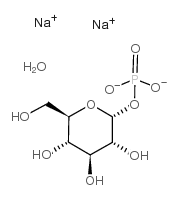Two carbon fluxes to reserve starch in potato (Solanum tuberosum L.) tuber cells are closely interconnected but differently modulated by temperature.
Joerg Fettke, Lydia Leifels, Henrike Brust, Karoline Herbst, Martin Steup
Index: J. Exp. Bot. 63(8) , 3011-29, (2012)
Full Text: HTML
Abstract
Parenchyma cells from tubers of Solanum tuberosum L. convert several externally supplied sugars to starch but the rates vary largely. Conversion of glucose 1-phosphate to starch is exceptionally efficient. In this communication, tuber slices were incubated with either of four solutions containing equimolar [U-¹⁴C]glucose 1-phosphate, [U-¹⁴C]sucrose, [U-¹⁴C]glucose 1-phosphate plus unlabelled equimolar sucrose or [U-¹⁴C]sucrose plus unlabelled equimolar glucose 1-phosphate. C¹⁴-incorporation into starch was monitored. In slices from freshly harvested tubers each unlabelled compound strongly enhanced ¹⁴C incorporation into starch indicating closely interacting paths of starch biosynthesis. However, enhancement disappeared when the tubers were stored. The two paths (and, consequently, the mutual enhancement effect) differ in temperature dependence. At lower temperatures, the glucose 1-phosphate-dependent path is functional, reaching maximal activity at approximately 20 °C but the flux of the sucrose-dependent route strongly increases above 20 °C. Results are confirmed by in vitro experiments using [U-¹⁴C]glucose 1-phosphate or adenosine-[U-¹⁴C]glucose and by quantitative zymograms of starch synthase or phosphorylase activity. In mutants almost completely lacking the plastidial phosphorylase isozyme(s), the glucose 1-phosphate-dependent path is largely impeded. Irrespective of the size of the granules, glucose 1-phosphate-dependent incorporation per granule surface area is essentially equal. Furthermore, within the granules no preference of distinct glucosyl acceptor sites was detectable. Thus, the path is integrated into the entire granule biosynthesis. In vitro C¹⁴C-incorporation into starch granules mediated by the recombinant plastidial phosphorylase isozyme clearly differed from the in situ results. Taken together, the data clearly demonstrate that two closely but flexibly interacting general paths of starch biosynthesis are functional in potato tuber cells.
Related Compounds
| Structure | Name/CAS No. | Molecular Formula | Articles |
|---|---|---|---|
 |
alpha-d-glucose-1-phosphate na2-salt
CAS:56401-20-8 |
C6H13Na2O10P |
|
Protein-protein interactions among enzymes of starch biosynt...
2015-04-01 [Plant Sci. 233 , 95-106, (2015)] |
|
Structural basis for the broad substrate range of the UDP-su...
2011-01-14 [J. Mol. Biol. 405(2) , 461-78, (2011)] |
|
Chitosan-based thermosensitive hydrogel as a promising ocula...
2012-11-01 [J. Biomater. Appl. 27(4) , 391-402, (2012)] |
|
Characterization of the TDP-D-ravidosamine biosynthetic path...
2011-03-21 [Org. Biomol. Chem. 9(6) , 1799-808, (2011)] |
|
The binding of β-d-glucopyranosyl-thiosemicarbazone derivati...
2010-11-15 [Bioorg. Med. Chem. 18(22) , 7911-22, (2010)] |